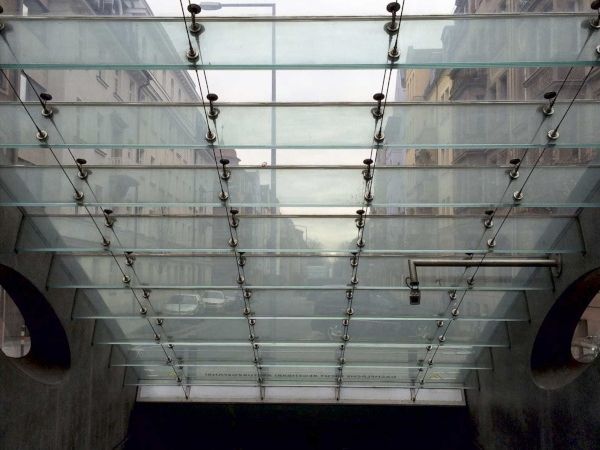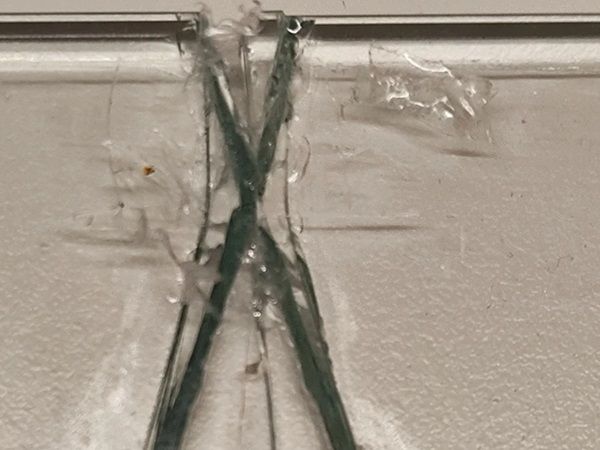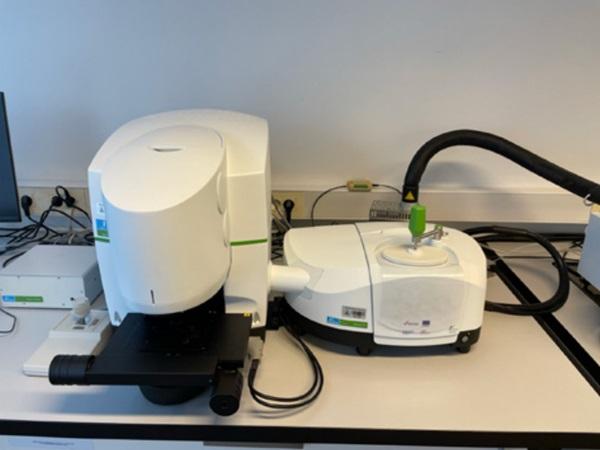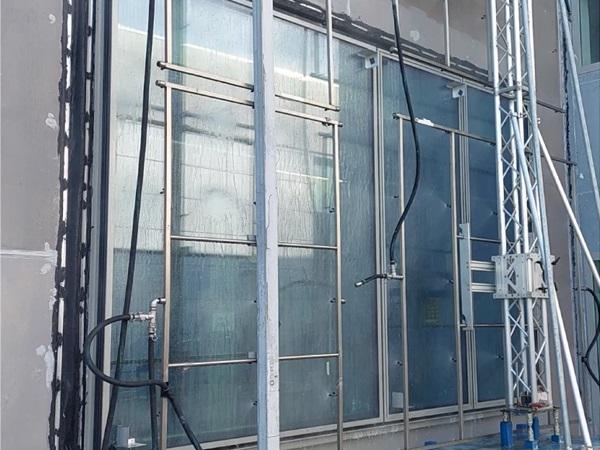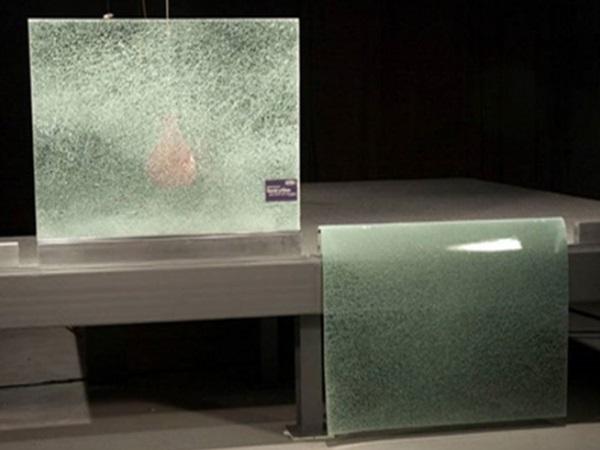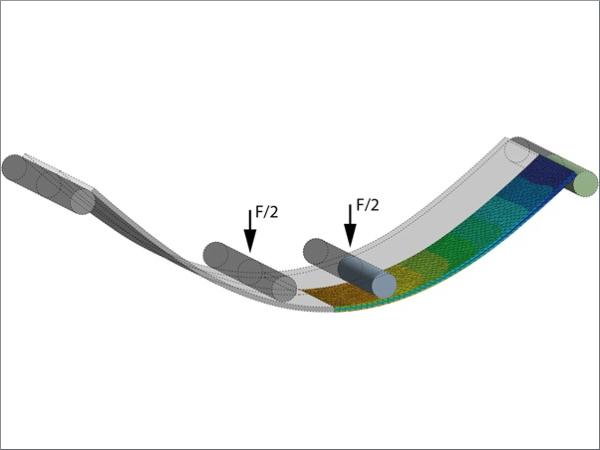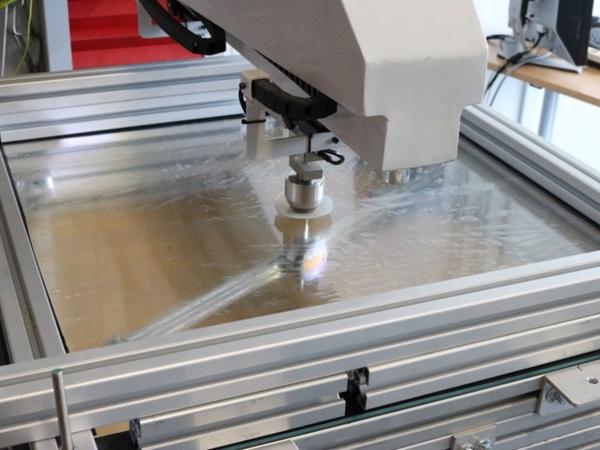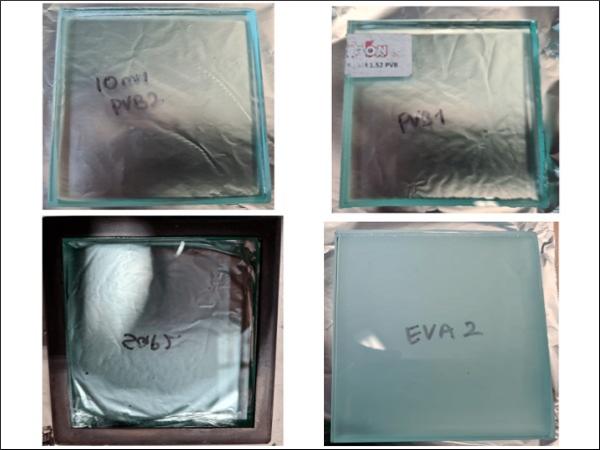Others also read
| This paper presents investigations on a novel approach for post-tensioning laminated glass beams with adhesively bonded iron-based shape memory alloy tendons along both longitudinal glass beam edges.
| The four point bending test is one of the most commonly used and standardised tests to determine the mechanical properties of materials.
| The research presents advantages and disadvantages for each different load type regarding interlayer chemical response.
| This paper presents the findings of the evaluation of an epoxy adhesive for structural glass to steel continuous bonds.
| The study is based on an extensive experimental campaign and an associated parametric study to test alternative designs under both quasi-static and dynamic loading conditions.
| Glass tempering is a process that can be made in many ways to get tempered glass that meets the standards. The selected way is usually chosen by the operator and is almost always based on experience instead of science.
| The use of laminated glass with PVB and ionoplast interlayers not only offers improved safety but can also be designed to help mitigate security threats ranging from basic safety to burglary and forced entry resistance and even ballistic protection.
| Correction of factor kₑ in EN1288-3
| This paper presents the initial results of a seismic study of silicone bonded glass curtain wall systems, combining both finite element analysis and experimental validation.
| In this contribution, PVB interlayers for highly effective and low-surface coverage bird-friendly laminated safety glass will be described.
| Laminating glass together with a PVB or ionoplast interlayer can help mitigate security threats that range from smash and grab burglary, forced entry, ballistics, to even bomb blast.
| A novel approach to generate a flat plate with enhanced stiffness has been identified. This approach is scalable, offering the potential for improved stiffness for both large-format glass and thin, chemically tempered glass.
| In the latest Glastory blog post, Antti Aronen analyzes the transformative potential of automated glass tempering.
| Glass is a brittle material. After the stress due to loading exceeds the resistance, a breakage occurs, and the glass is no longer intact.
| ‘Levitation Ledges at the Summit of the One Vanderbilt (NYC)’
The Effects of the Large-Scale Factor on the Integrity Parameters of Monolithic Fire-Resistant Glass
| Glass structures are subject to high fire safety requirements. Two methods are employed in this work: experimental studies of small-sized and large-sized samples and simulations of heating glass structures.
| This study delves into the critical aspects of fire safety in laminated glass.
| This study describes what to our knowledge is the first full scale fire resistance tests of Timber-Glass composites beams.
| The present paper describes a method for non-destructive testing of the glass strength.
| This paper investigates the use of bolted and brittle/ductile adhesive connections in glass structures.
| Explosion events represent an extraordinary action for buildings and especially for the building envelope.
| The trend in modern architecture towards a steady optimisation of building envelopes is continuing. Beside its function as a design element, a façade also contributes to the building’s energy balance.
| This paper offers an in-depth exploration of EVA-based encapsulants, which are widely used in the photovoltaic industry but also have potential for specific architectural glass applications.
| Within ongoing research at the Faculty of Civil Engineering of the Czech Technical University in Prague, a set of real-scale insulating glass panels with embedded laminated point connections was tested.
| In this study, double-laminated glass plates are impacted by 7.62 mm armour piercing (AP) bullets, and their ballistic limit velocity and curve are determined both through experimental tests and numerical simulations.

